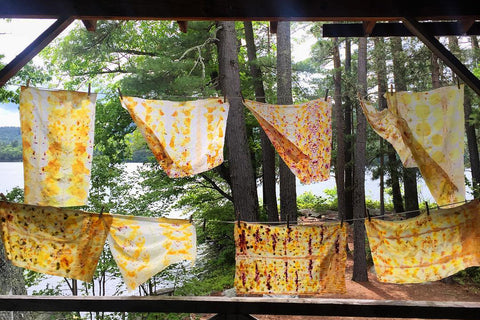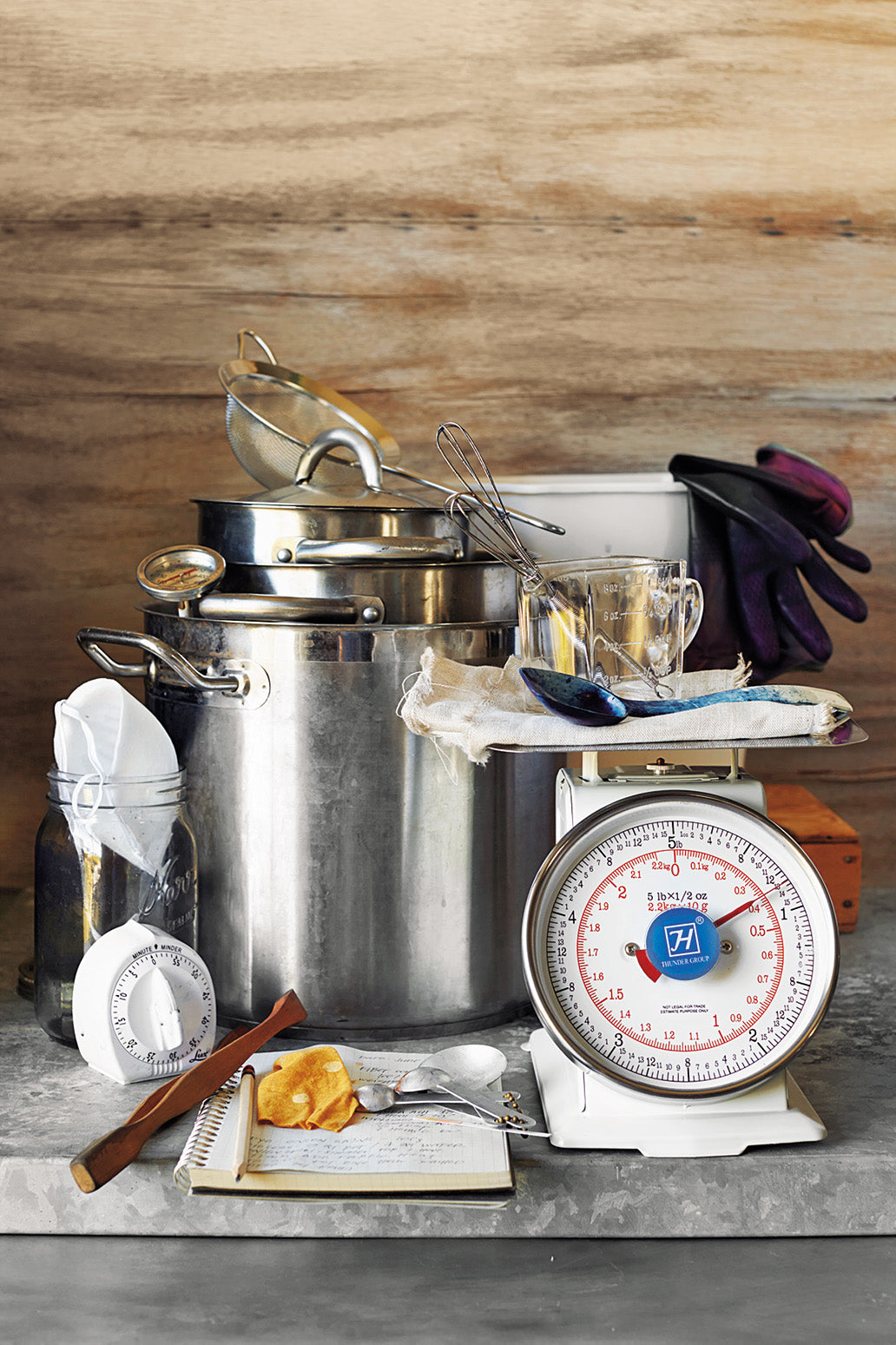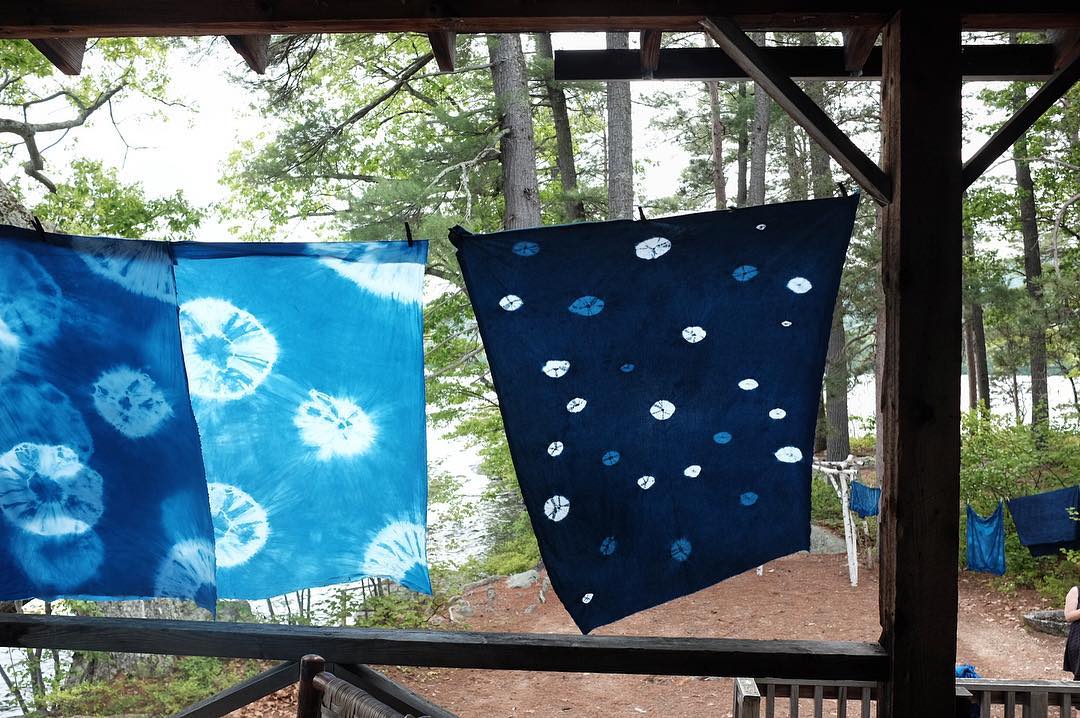
In our newsletter this month, we announced the 1st AVFKW Dye Day, coming up on Saturday, August 25th! August 25th is two and a half weeks out - so it's time to start planning!
We want to help you plan a unique and fun natural dyeing party with your friends. Kristine, Adrienne, and I have been teaching natural dyeing classes at home and abroad for over 10 years, so we have a lot of experience and tricks for hosting a successful event. Unless you have been stocking up, or have a regular dye practice, you will probably need to gather some supplies and materials ahead of time - so let’s get started now!

Your guide throughout this process, other than these blog posts, is our book The Modern Natural Dyer. MND (as we call it) was published in October 2015 and is a great resource for new and experienced dyers. I use it as a reference in the dye studio at least once every week! If you don't have a copy yet, you can purchase a signed copy (including a naturally dyed bookmark) from our website here.
We stock all the scours, mordants, dyes, indigo supplies, dyeable fabric, and yarn that you'll need to get your party started! Check the end of this post for a discount you can use when you purchase natural dyeing supplies from us - including your copy of MND.

The two types of dyeing that we think work best in a group setting like a dye party are eco-printing and indigo dyeing. These two processes are pretty different from one another and require different tools, materials, and preparation. I'll help you pick which type of dyeing you'd like to host (maybe you want to do both!) and make sure you have all the tools and information you need. This blog post overs eco-printing - click here to read the indigo post.
Eco-printing is the process of pressing whole dyestuffs, like flower petals and leaves, into fabric, bundling the fabric tightly together, and heating it in a dye pot. Your fabric must be scoured and mordanted before applying your dyestuffs, and you'll want to make sure you are using some plants that are listed in MND (like marigolds, cosmos, and coreopsis) that give good color and are lightfast.

Eco-printing works well with a wide range of fabrics, from light weight wovens to jersey to heavier flannels, and any natural fiber type including wool, silk, cotton, and linen. It's great for small to large projects - you could dye fabric to make the sewing kit from MND (page 79), a project bag for your knitting, or an Endless Summer Tunic.
To host an eco-printing party, you'll need your dyestuffs (you can grow these, purchase from a nursery, or carefully forage for them), dowels or branches, strong thread, and a medium-sized pot to hold the bundles from each of your party-goers. You'll also need a heat source (like your kitchen stove or a propane burner in your backyard). Your attendees will need to scour and mordant their chosen fabric ahead of time. Tell your friends to scour at least 2 days in advance and to mordant at least 1 day in advance - so they arrive at your dye party ready to go. They can easily dry their fabric out to make transportation easier.

Once your supplies are gathered and your friends have arrived, follow the directions for the Flowers At My Fingertips Sewing Kit (page 79). After everyone has carefully unwrapped their bundles, do a little show and tell so everyone can see what was made!
Eco-printing supplies to gather:
+ Fresh flowers like marigolds, cosmos, and coreopsis
+ Dowels, PVC pipe, or sticks, approx 1-2" in diameter, 1 per person per fabric
+ Medium to large pot (20 qt should fit approx 8-10 bundles)
+ Button and craft thread, or other strong cotton string
+ Tongs, rubber gloves
Eco-printing homework for attendees:
+ Scour your fabric at least 2 days in advance and mordant at least 1 day in advance before the party (see MND pages 56-59)
+ Bring some flowers, leaves, or other plant material from your garden
Eco-printing tips and tricks:
+ We recommend that 80% of the dyestuffs you are using are plants that you know produce color on cloth. Experimenting with a few plants from your garden can be a lot of fun but this helps avoid disappointment when you unwrap your bundle.
+ If your friends are dyeing similar looking fabrics, tie a small piece of colored thread around your fabric (or embroider initials) in order to tell them apart
+ Be careful when unwrapping your bundles - even if they feel cool to touch on the outside, they may be hot inside! Have a couple buckets of cold water on hand to rinse and cool your bundles before opening.
+ If you wish you had more color on your fabric, don't despair - you can put fresh flowers down, retie your bundle, and pop it back in the pot again!
To be continued in Part 2 ... click here to read about hosting an indigo party.
Use the hashtag #AVFKWDyeDay on your IG photos on August 25th to see people around the country hosting their own dye party! We also have a brand new hashtag for IG photos of in process and finished objects using materials you have purchased at AVFKW. Tag your photos with #Verbalong, and be eligible to win a gift in our monthly drawing!
Do you need help selecting the appropriate scours, mordants, and dyes? Give us a call at 510-595-8372 or email info (at) averbforkeepingwarm (dot) com and we'll help you out.
To celebrate and prepare for the upcoming dye day, we are offering 15% off natural dyes, kits, The Modern Natural Dyer, and more. Enter AVFKWDyeDay at checkout to receive your discount.
-- Sarah


